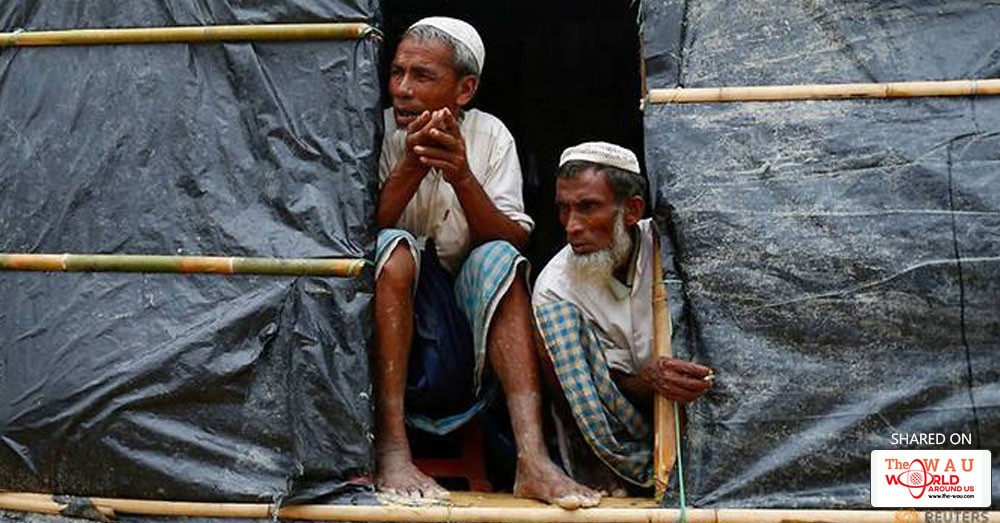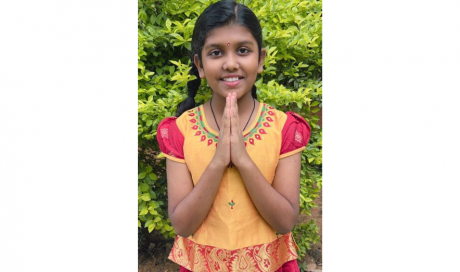Rohingya is a controversial term in Myanmar – and there is fear on both sides of what “giving in” to resolve the Rohingya crisis may require giving up, says Nehginpao Kipgen.
Rohingya is a controversial term in Myanmar. Part of the problem lies in the nomenclature itself.
The Rohingya community jealously guard their name, as a projection of their identity as a persecuted minority and an integral part of their international campaign for attention and help.
Although they call themselves Rohingya, a term widely used by the international community including the United Nations, the Myanmar government and the overwhelming proportion population of Myanmar say they are illegal Bengali immigrants from neighbouring Bangladesh.
Most people in Myanmar today see developments in Rakhine state as a fight against extreme Islamist terrorists who have infiltrated Myanmar, and are using fabricated stories to fracture Myanmar society and further a separatist agenda of an independent Rakhine state.
They don’t belong in Myanmar, according to this side of the story.
The fact is that the Rohingya are not included among the officially recognized 135 “national races” enshrined in a citizenship law passed in 1982.
Though this ethnic classification was undertaken under General Ne Win, who installed the military regime after a coup in March 1962, successive governments, including the present National League for Democracy government led by the 1991 Nobel laureate Aung San Suu Kyi has not changed this state policy.
The latest wave of violence is a consequence of lingering, simmering tensions between Rohingya Muslims and Rakhine Buddhists which started in 2012 with the rape and murder of a Rakhine woman on May 28, 2012, allegedly by Rohingya Muslims.
The May incident was followed by a retaliatory killing of 10 Muslims by a mob of Rakhine Buddhists on Jun 3 that same year, with greater violence against the Rohingya, displacing about 140,000.
AN EXODUS IN 1978
Such tensions have been around for several decades, with multitudes of Rohingya fleeing to Cox’s Bazar in southeastern Bangladesh in waves.
A significant exodus occurred during what the Myanmar immigration and security authorities call operations to register citizens and screen out foreigners under the Burma Socialist Programme Party military government in 1978.
That year, over 200,000 refugees from Myanmar crossed over to Bangladesh. The international community accused Myanmar authorities of persecution, torture, harassment and excessive use of force against the Muslims of Rakhine state.
The refugees claimed that they were fleeing the atrocities of the Myanmar army and immigration officials who targeted them.
But the Myanmar government said these Muslims were not its nationals but illegal immigrants or fugitives fleeing from the law. The Myanmar government’s position was that the refugees were Bangladesh nationals, who had illegally settled along the border and inside Myanmar.
According to the Myanmar government, the refugees fled because they lacked proper entry registration papers and wanted to escape the scrutinisation drive which was aimed at classifying the status of residents – and separating bonafide citizens from foreigners.

LIVED IN MYANMAR FOR GENERATIONS BUT STILL UNRECOGNISED
The Rohingya Muslims’ historical origin is a controversial subject. Some claim that the Rohingya are the descendants of Muslim Arabs, Moors, Persians, Turks, Mughals and Bengalis who came mostly as traders, warriors and saints overland and through sea routes.
History tells us that the Rohingya have lived in the country for generations. Many of the Rohingya had indeed migrated from Bangladesh during the British rule, and had come to live in the state of Arakan, today’s Rakhine, since the 1800s, based on British population census.
Because of the British Empire’s expansive power and influence in this part of the world, coupled with the porous borders or no borders at all, the movement of people from one region to another was not difficult.
VIOLENT HISTORY?
Sporadic incidents of violence over the years aside, until the recent emergence of the Arakan Rohingya Salvation Army (ARSA), there were no signs of violent resistance in the Rohingya’s history.
Yet, therein lies the worry of the Myanmar military that groups like ARSA would use Rakhine as a staging ground for terrorist attacks in other parts of Myanmar.
The other major fear of Rakhine Buddhists is that given the rising population of the Rohingya Muslims, they may be outnumbered - a situation which may eventually lead to the Rohingya demanding a separate state within the existing Rakhine state.
It seems a fight for identity on the one hand brushes up against expressed security fears on the other.
CITIZENSHIP THE KEY ISSUE, NOT IDENTITY
While identity is a major problem, the other equally important or even more so critical issue is the citizenship question. According to the 1982 citizenship law, introduced by the Myanmar junta, there are three categories of citizenship: Full citizen, associate citizen and naturalised citizen.
Full citizens are descendants of residents who have lived in Burma prior to 1823 or are born to parents who are both citizens. Associate citizens refer to those who acquire citizenship through the 1948 Union Citizenship Act. Naturalised citizens are people who lived in the country before Jan 4, 1948 but only applied for citizenship after 1982.
The strict application of the 1982 citizenship law would mean that while some of the Rohingya may qualify, most may be denied full citizenship status as they may not be able to provide or produce the required evidence or necessary documentation for citizenship application.
Because of the violence since 2012, involving the burning down of houses or entire villages belonging to the Rohingya community, and as a result of forced displacement or confinement in refugee camps, many genuine a nd important documents may have been destroyed or lost.
The ruling party, the Union Solidarity and Development Party (USDP), chaired by then-President Thein Sein, had initially issued the Rohingya Muslims along with other ethnic minorities who were not citizens white cards that allowed them to vote in the 2015 general election. White card holders were allowed to vote during the 2010 election, which favoured the USDP.
However, after much political pressure especially from Buddhist hardline groups that took to the streets, the government announced in February 2015 that the white cards will expire on Mar 31, 2015, before the 2015 election.
The Rohingya Muslims were given a May 31 deadline to submit their white cards and apply for Myanmar citizenship, under the 1982 citizenship law.
But white card holders had the onerous burden of proof, to show evidence of a long family history in Rakhine state if they wanted to obtain Myanmar citizenship.
NOT A RECENT DEVELOPMENT
It is clear that the Rohingya crisis is not a recent development. The Myanmar government’s claim that they are illegal Bengali immigrants is also not a recent phenomenon.
At the same time, it is apparent that the successive governments of Myanmar, at least since the Ne Win-led military government, have pursued or adopted different measures to manage the issue, but none have deviated from the official state line that the Rohingya people do not belong in Myanmar.
The larger question is how this conundrum can be resolved peacefully, if at all possible.
While it may be difficult or even impossible to imagine for many living in Myanmar, including the military, the nationalists and the ultra-nationalist groups to accept the Rohingya as citizens of Myanmar, it is undeniable fact that many of them have lived in the country for generations, with no fault of their own.
It is important for the people of Myanmar to understand that without addressing the fundamental issues of the Rohingya, such as identity and citizenship, the core of the problem in Rakhine state will remain unaddressed. The Rohingya issue will continue to pose security and territorial threats and hamper the nation’s peace process and development.
Ultimately, reconciliation will have a chance to succeed only when the Rohingya and those living in Rakhine are willing to compromise on their differences by respecting each other’s identity and culture.
More importantly, the Myanmar government and the general Myanmar public must be ready to embrace the Rohingya if any genuine reconciliation is to be achieved.
Some of these fundamental issues were addressed in Kofi Annan’s state advisory commission’s recommendations, including concrete steps to end enforced segregation of ethnic Rakhine Buddhists and Rohingya Muslims, and to address the statelessness of the Rohingya.
It’ll be prudent to relook those recommendations in thinking through steps towards reconciliation.
Nehginpao Kipgen is assistant professor and executive director of the Centre for Southeast Asian Studies at the O P Jindal Global University. He is the author of three books on Myanmar, including Democratisation of Myanmar.
Share This Post















